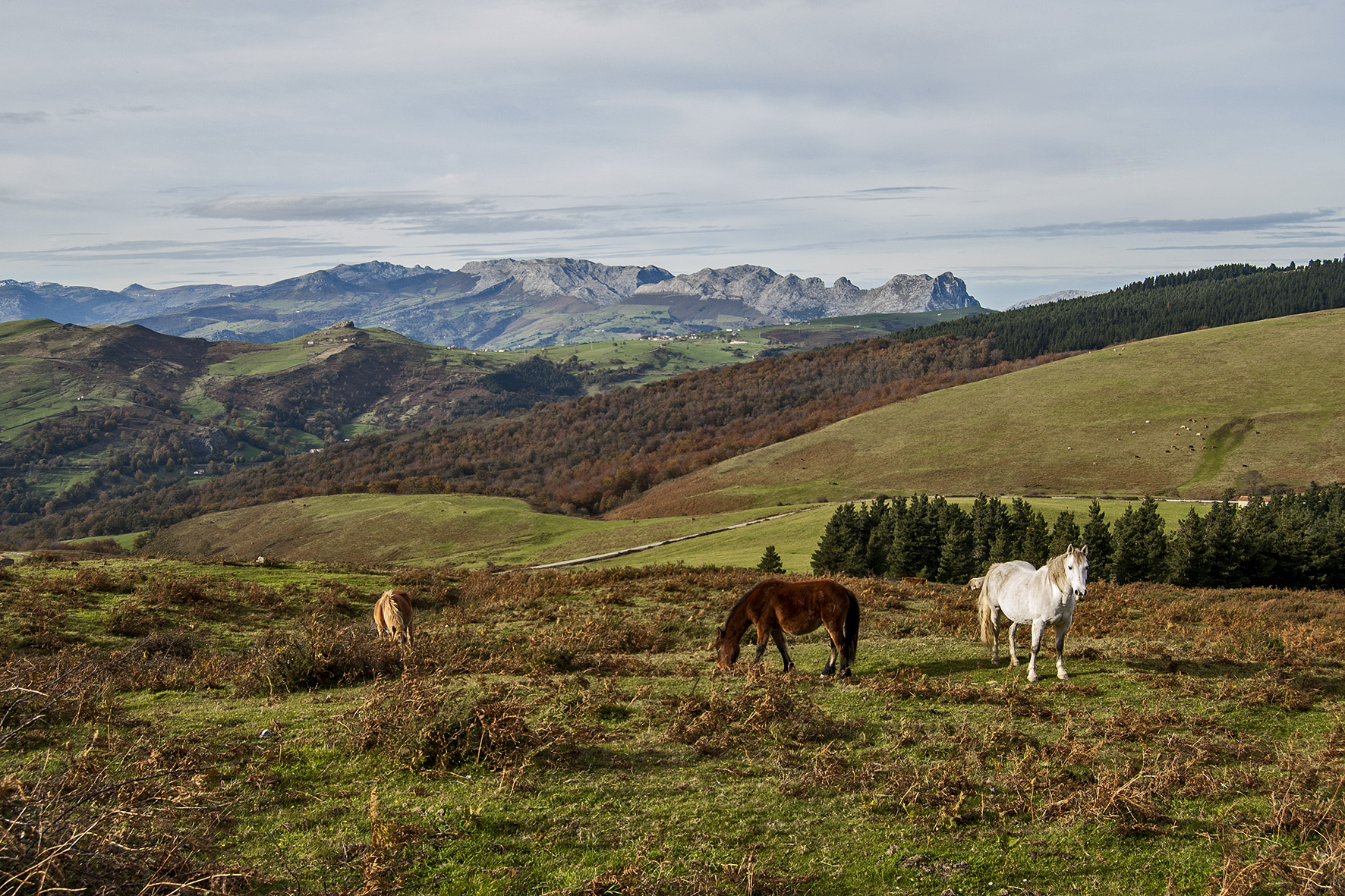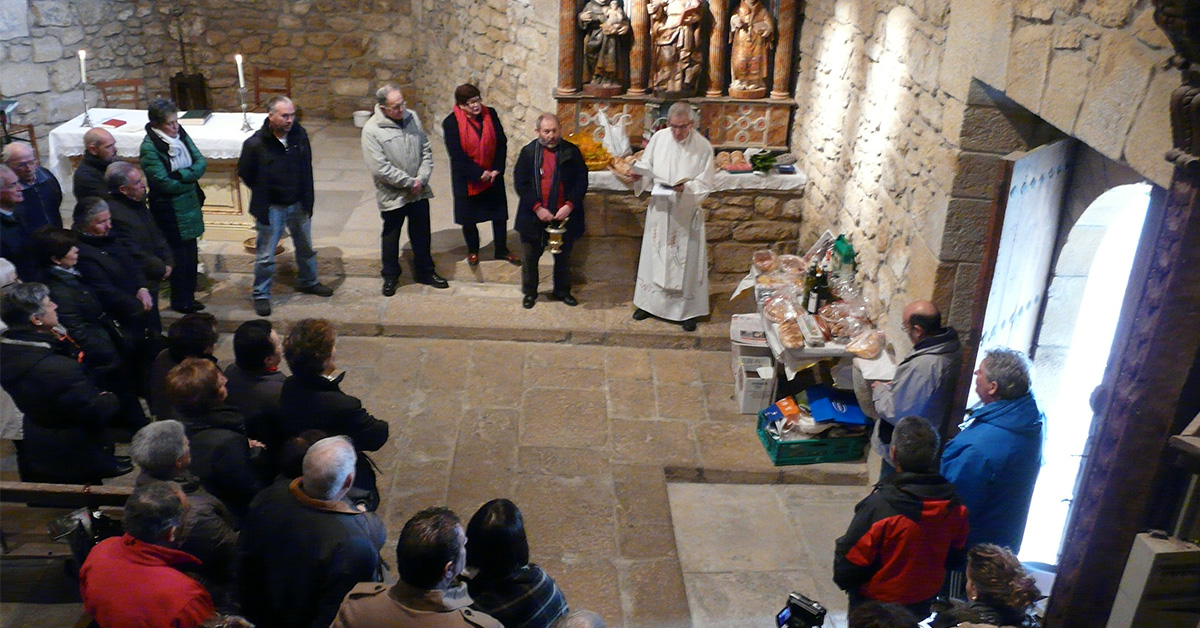Archives
St. Anthony the Abbot or St. Anthony the Great (17 January) is known for living as a hermit, for his strength shown in the face of repeated temptation by the devil, and for protecting the swine with which he is traditionally depicted in the iconography. Cattle and livestock in general were usually given a day of rest on the saint’s feast day. In turn, they were blessed by driving them over the smoking remains of the yule log, passing under a protective charm placed on the lintel of the animal pens and feeding them blessed bread and water. If that were not possible, the animals were driven around a chapel or church dedicated to their patron saint.
(more…)

Luis Maria Artabe Zearreta feeding the livestock. Aldanagoikoa Farmstead in Amorebieta-Etxano (Bizkaia), 1985. Manuel Ignacio Zubia Artabe.
The internal distribution of spaces in rural houses varied to more adequately meet the needs of households and their way of living. So there where livestock farming was the major activity the whole or most of the ground floor would be originally used for stabling. Should the hearth be on that same floor, hatches in the wall were fairly common for feeding the cows straight from the kitchen or the passageway. Being so very close, domestic animals actually provided a natural means of heating agricultural dwellings. (more…)

Transportation of milk churns by cart. Neighbourhood of Ambasaguas in Carranza (Bizkaia), 1958. Courtesy of Miguel Sabino Díaz.
The economy of our society of generations past was very nearly self-sufficient, with hardly any money involved. Payments in kind and bartering among neighbours were common practice. Only a handful of items were purchased: salt, sugar, oil and tobacco. And depending on locations and circumstances not even those, as in the following instances. In surroundings close to salt mines across the territory locals were well supplied for salt. Some keen smokers cultivated tobacco; others contented themselves with the leaves of native plant species. Once dried and cut, the vegetable remains were rolled in the lighter inner husks of maize. Olives were grown in the south of the country, so cooking oil was readily available. Animal fats, namely tallow and lard, were often used instead of oil in areas not suited to olive growing. Little sugar was consumed, honey being its natural alternative. In time of shortage the traditional farmstead was virtually a complete autarky from the point of view of food sovereignty. (more…)

Panoramic view of common pastures in La Calera del Prado. Valley of Carranza (Bizkaia), 2008. Miguel Sabino Díaz.
In the Valley of Carranza (Bizkaia) the best common wood-pastures located in the lowlands within close proximity to populations were formerly known as boheriza. The terms boriza and voeriza were also registered on 18th and 19th-century public record. (more…)



